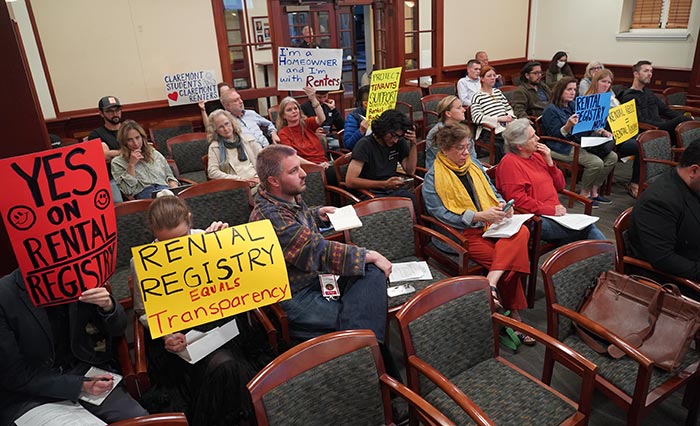Protecting public health, economy creates dilemma for officials

by Steven Felschundneff | steven@claremont-courier.com
In the same week the state of California and Los Angeles County made moves to relax stay-at-home orders, Los Angeles County Department of Public Health recorded 1,638, new cases Monday, its highest number in a single day.
Those two milestones also come with competing interests: mitigating the order’s economic impact while continuing to protect public health; thus creating a dilemma government officials will face for some time.
During a news conference Monday, California Governor Gavin Newsom announced that the state would begin to relax the now seven-week-old stay-at-home order with certain business allowed to reopen as soon as Friday.
Retailers that would be allowed to open on a pick-up basis only include: bookstores, music stores, toy stores, florists, clothing retailers and sporting goods shops. Gyms, restaurant dining rooms, personal grooming salons and live entertainment venues would remain closed.
On Wednesday Los Angeles County Public Health released a five-stage, phased approach to relaxing directives of the safer-at-home order called the “Roadmap to Recovery.”
The county is currently in stage one, where we have been for the past several weeks. However, county officials anticipate beginning stage two as soon as Friday, which would allow florists and some retailers to open with curbside pickup as well as reopening car dealerships, golf courses and trails, with appropriate safeguards in place. Next week additional restrictions may be lifted to include more retailers, manufacturers and other recreational facilities.
“Physical distancing and infection control protocols must be adhered to and cloth facing coverings must be worn,” the announcement read.
Tracking hospital capacity
Public health officials want to make certain that they have the capacity to slow new infections and that those efforts will be effective.
The department’s guidelines include tracking hospital capacity to manage a surge in cases and people with serious illness; maintaining sufficient supply of protective equipment for all healthcare workers; reaching adequate testing capacity and testing supplies; and achieving the capacity to conduct case and contact tracing.
The county gave no timeline for the staged process beyond those businesses and facilities opening in the coming days. Stage two, for instance, will play out over some time and eventually include essential healthcare, libraries, museums and cultural centers.
The next stages, which include higher-risk businesses that require larger gatherings will take more time. Likely it will be months before movie theaters, schools, colleges and universities reopen, and conventions and spectator events may still be closed through the end of the year. Each new stage of reopening will have mandatory safety protocols.
“Today we are sharing the county’s Roadmap to Recovery to ensure that as we reopen our businesses we do so in a way that is safe for employees and customers, continues to slow the spread of the virus, and does not result in increases in our death rate from COVID-19,” said Director of Public Health Barbara Ferrer, said. “I am so grateful to all of you have worked together to get us to a place where a slow, safe reopening is possible.”
Since its first coronavirus update on March 4, health officials have reported 1,367 deaths and identified 28,644 positive cases across all areas of LA County. Ninety-two percent of people who died had underlying health conditions. As of Wednesday, a total of 5,142 people who tested positive for COVID-19 (19 percent of positive cases) have been hospitalized at some point during their illness.
Part of the reason cases are increasing is that testing capacity continues to expand with more than 183,000 people receiving the test, 13 percent of whom received a positive result. The agency will also be monitoring mortality rates, hospitalization and testing accessibility while tracking rates by age, race, poverty level and ethnicity.
Also this week, the Centers for Disease Control (CDC) updated its guidance on how long people who are positive for COVID-19 should self-isolate. New evidence suggests it may take longer for the virus to shed, meaning that an infected person may be able to infect others for a longer period of time than first believed.
People who are positive (or presumed positive) for COVID-19 should now self-isolate for 10 days after symptoms first appear or they test positive. Additionally, people should remain quarantined for 72 hours after symptoms subside. This means you must stay home until your fever has resolved without the use of fever-reducing medications and there is improvement in your respiratory symptoms.
As public health makes plans to relax some of the provisions of the Safer At Home order, businesses and residents will need to continue to observe and practice physical distancing and take infection control precautions. Increased interactions between residents and workers can increase the risk and rate of transmission of COVID-19.
Following directives will continue to ensure that it is safe for as many people to work as possible, while still slowing the spread of coronavirus and to prevent healthcare facilities from becoming overwhelmed.









0 Comments